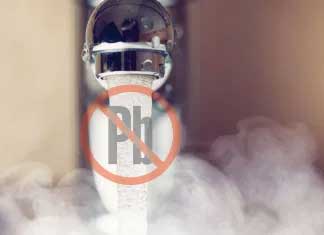Over the past several years, there are two things that have become very evident regarding lead in our drinking water: first, lead is very present, and the issue only seems to be getting worse over time. Second, lead is a toxic metal that can be harmful to human health, even at low exposure levels.
Regulations and guidance in the industry are constantly changing in response to this knowledge. The current non-enforceable maximum contaminant level goal for lead in drinking water is zero. In late 2018, however, the U.S. Environmental Protection Agency (EPA) revised their guidance on the 3Ts – Training, Testing, and Taking Action – for Reducing Lead in Drinking Water in Schools and Child Care Facilities. This updated language loosely suggested 5 ppb as a level that indicates the upstream plumbing is contributing toward the lead levels, and that follow up and remediation should be performed. Many state, local, and federal governments have since introduced or passed legislation reducing the maximum acceptable lead concentration in drinking water to 5 μg/L (ppb).
The vast amount of constantly changing information can be confusing, even to those with years of experience. When it comes to drinking water standards, the information can be similarly confusing since lead shows up in many different places for completely different reasons. Let’s sort through the main, high level differences to see where lead appears, and why it is there in each case.
Performance
Industry standards establish testing protocols and reduction requirements for reducing lead concentrations in water. The protocols vary based on the treatment technology being evaluated. NSF/ANSI 53, Drinking Water Treatment Units – Health Effects, is for filters that intend to remove lead from the influent drinking water. This reduction is typically achieved through a specialty carbon or additive used in conjunction with another media. NSF/ANSI 58, Reverse Osmosis Drinking Water Treatment Systems, specifically addresses reverse osmosis technology. NSF/ANSI 62, Drinking Water Distillation Systems, provides the guidance on testing distillation systems. All three of these standards include the same requirement that subjects each product to an influent challenge of 150 ppb of lead and verifies that the product water reduces that concentration to 5 ppb or below.
Lead Content
NSF/ANSI 372, Drinking Water System Components – Lead Content, addresses the amount of lead content in any materials that come in contact with drinking water. This standard is directly in response to Section 1417 of the Safe Drinking Water Act (SDWA), which prohibits the use of plumbing fittings, fixtures, solders, and fluxes that do not meet the definition of “lead free.” “Lead free” is defined in the Act as, “not containing more than 0.2 percent lead when used with respect to solder and flux; and not more than a weighted average of 0.25 percent lead when used with respect to the wetted surfaces of pipes, pipe fittings, plumbing fittings, and fixtures.”
The NSF/ANSI standard defines both the acceptable analytical procedures as well as the components of a product that are required to be tested. Specifically, any materials that have lead specified in their composition, or any materials that are more than 10 percent of the total wetted surface area of the certified system or component must be further evaluated for lead content. Outside of solders and fluxes, lead is typically found in brass and bronze, and those are the materials which often fail the testing.
Materials Safety
Extraction testing is a required test in most standards. The test is verifying that the materials of construction do not leach any harmful chemicals back into the drinking water through simple contact. In this test, water is held inside the product, or the product is immersed in water for a set period of time to allow any potential contaminants from the materials to “extract” or leach out into in water. When this extraction water is analyzed for contamination, lead is nearly always one of the contaminants being evaluated.
This testing requirement may seem redundant when considered with NSF/ANSI 372, as both address the safety of materials contacting the drinking water. However, there is a need for both as NSF/ANSI 372 establishes the criteria to specifically comply with the SDWA, while extraction testing establishes the limits on lead actually leaching
into the water
Each day, we continue to get a better understanding of just how large the scope of the lead problem is in our drinking water. It is also clear that without massive infrastructure improvements, the issue will continue to persist for many years. It is therefore important for members of our industry to have a firm grasp of all the standards that relate to lead, as those are the tools that help ensure we are collectively providing our nation with access to safe drinking water.
Article by Tina Donda & RyanPrince first appeared in ASSE’s Working Pressure magazine
Last modified: May 10, 2021

